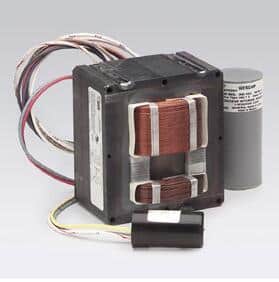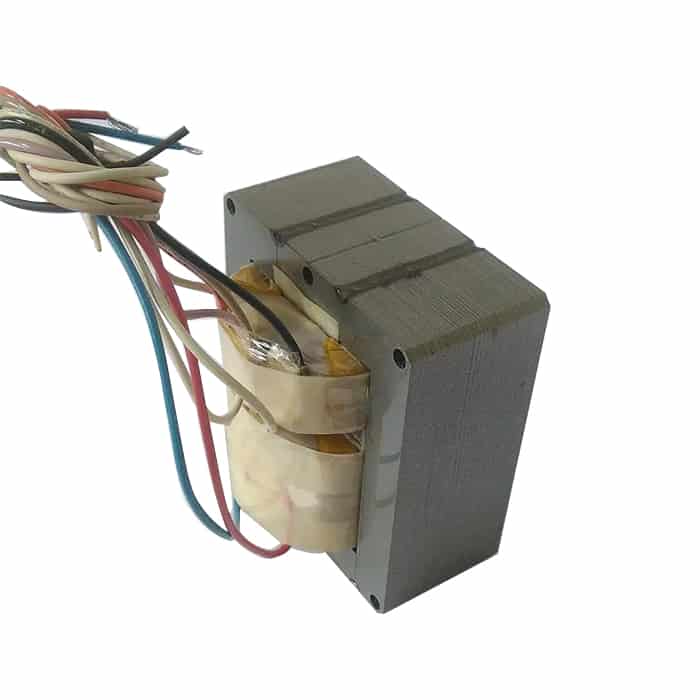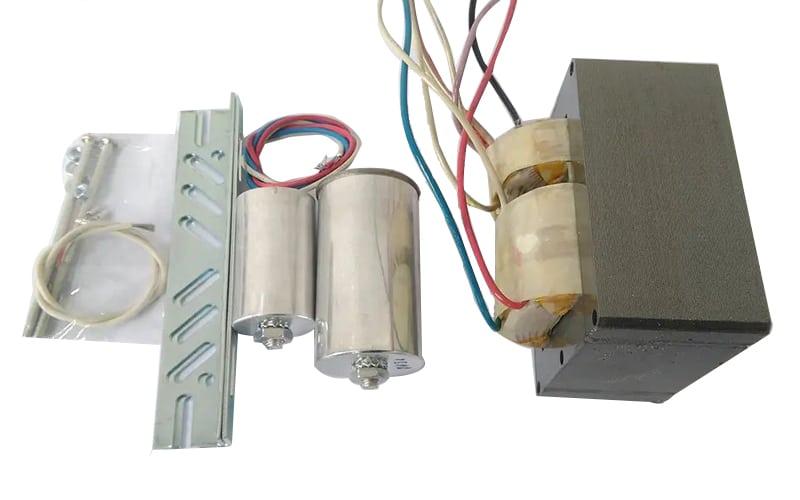Metal halide ballasts are necessary to run high-intensity lighting found in many commercial and industrial settings. As lighting technology advances, people find that these traditional ballasts are inefficient, expensive to maintain, and not environmentally friendly. We will explore whether it makes sense to scrap a metal halide ballast or if you should consider other options, like retrofitting or upgrading.
It might be worth scrapping the metal halide ballast because they have valuable metals like copper and steel in them. The value depends on the metal content and market prices.
What Is a Metal Halide Ballast?
A metal halide ballast is a device that controls the voltage and current for metal halide lamps, helping them start and operate efficiently. It plays a key role in high-intensity discharge (HID) lighting systems, commonly used in stadiums, factories, warehouses, and large outdoor spaces. The ballast regulates the electrical current needed to sustain the arc within the lamp, ensuring steady light output. Metal halide ballasts, on average, have a lifespan of 10-15 years depending on the environment, but they can degrade more quickly in high-heat or heavily used areas. Despite their reliability, as ballasts age, their efficiency often declines, prompting many users to consider scrapping or replacing them.
Why Consider Scrapping Metal Halide Ballasts?
As metal halide ballasts age, their energy efficiency decreases, leading to higher energy costs and operational inefficiencies. Aged ballasts can impact lighting quality, increasing flicker or causing outages, which can disrupt operations in commercial settings. Scrapping an older ballast not only eliminates an inefficient component but also reduces waste of energy and resources.
Moreover, scrapping helps reduce environmental impact. Metal halide ballasts contain hazardous materials, such as mercury, that must be disposed of carefully. Recycling components responsibly can prevent harmful substances from leaking into the environment. Another consideration is the availability of newer lighting solutions, such as LED technology and advanced electronic ballasts. These alternatives not only offer enhanced energy efficiency but also typically require less maintenance over time, making them attractive replacements for aging metal halide ballasts.
Economic Factors in Scrapping Metal Halide Ballasts
The decision to scrap a metal halide ballast often comes down to an economic analysis. Replacement costs, scrap value, and energy savings are key factors. Metal halide ballasts contain valuable materials like copper, aluminum, and steel, which can be salvaged and sold. Depending on the condition and type of ballast, these metals may yield a modest return.
However, the true economic benefit often lies in replacing old ballasts with energy-efficient lighting solutions. Upfront costs of purchasing new LED ballasts or fixtures may be offset by significant long-term savings in energy costs and reduced maintenance. Over time, the higher energy efficiency and longer lifespan of newer lighting systems help justify the initial investment. Businesses that rely on heavy lighting in factories or large commercial spaces can save considerably by scrapping inefficient ballasts and upgrading their systems.
Environmental Benefits of Scrapping Metal Halide Ballasts
Scrapping metal halide ballasts provides several environmental benefits. By properly recycling the ballast, companies can prevent the release of hazardous materials like mercury, which are harmful to both human health and the environment. Many organizations are committed to sustainability, and scrapping older, inefficient components aligns with environmental goals by reducing waste and promoting responsible disposal.
Another benefit of scrapping is compliance with environmental regulations, which often require safe disposal methods for electronic waste. Certifications like UL and RoHS encourage recycling or scrapping of older lighting equipment to prevent harmful disposal practices. By removing outdated equipment and replacing it with energy-efficient systems, businesses not only reduce their environmental footprint but also signal a commitment to sustainability practices, which is increasingly important in today’s market.
Scrapping Process and Safety Considerations
For those considering scrapping a metal halide ballast, it is essential to understand the proper steps and safety measures involved. Dismantling a ballast should only be done by certified professionals, as handling high-voltage components can be dangerous. Capacitors within metal halide ballasts may retain a significant charge even after the device is powered off, and proper discharge is required to prevent electrical shock.
To ensure safe and environmentally responsible disposal, many businesses choose to work with certified recycling facilities. These facilities follow strict protocols to handle hazardous materials and separate valuable metals for recycling. While some companies may attempt to scrap ballasts themselves, hiring certified professionals or consulting an experienced recycling facility is the safer choice, especially given the risk of improper handling.
Alternatives to Scrapping: Retrofitting and Upgrading
While scrapping may seem like an immediate solution, retrofitting or upgrading can provide long-term benefits. Retrofitting metal halide lighting systems with LED technology is an increasingly popular choice, as LEDs consume less power, have a longer lifespan, and require less maintenance than metal halide ballasts. For many businesses, retrofitting presents a viable, cost-effective alternative to scrapping, offering energy savings and reduced operational costs over time.
Upgrading to modern electronic ballasts for metal halide lamps is another option. Electronic ballasts are more efficient and can improve the lifespan of existing lighting systems, often providing better lumen output with lower energy consumption. By assessing the potential cost savings, environmental benefits, and the increased longevity of upgraded lighting systems, businesses can make informed decisions about whether retrofitting or scrapping is the best route.
Case Studies: Real-World Examples of Scrapping and Upgrading Metal Halide Ballasts
Many industries have transitioned from metal halide ballasts to more energy-efficient lighting systems. For instance, manufacturing facilities often find that scrapping and replacing metal halide systems with LED lighting leads to lower energy costs and improved lighting quality, enhancing safety and productivity. Similarly, commercial warehouses that replaced metal halide ballasts with LED fixtures reported significant savings in maintenance and energy bills, justifying the initial cost of replacement.
Other companies opted for retrofitting, especially when a full replacement was not feasible. By replacing only the ballast components with electronic or LED-compatible ballasts, these companies extended the life of their existing lighting infrastructure while reducing energy consumption. These case studies highlight the importance of evaluating long-term savings and environmental impact when deciding to scrap or upgrade metal halide ballasts.
Final Words:
Deciding whether to scrap a metal halide ballast or fix it involves looking at both money and the environment. Scrapping can help you right away by getting rid of something that’s not working right and reducing hazardous waste. Fixing it can save you money and help the environment in the long run. You need to look at what you need and what you can do to decide what’s best for your situation.



